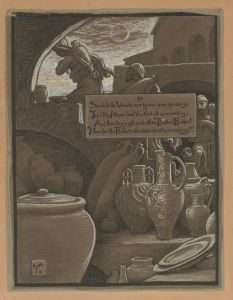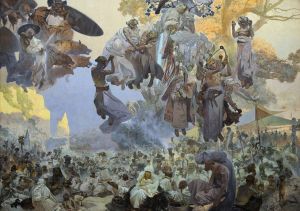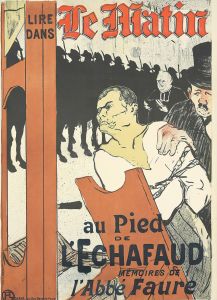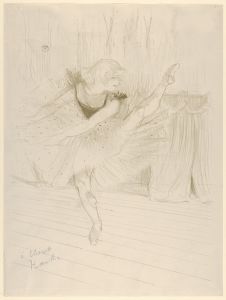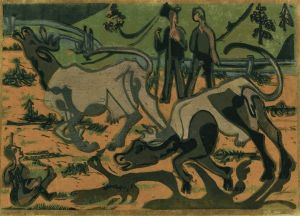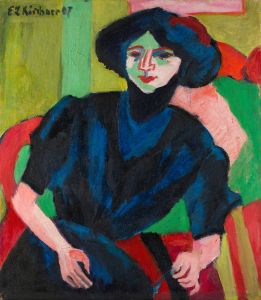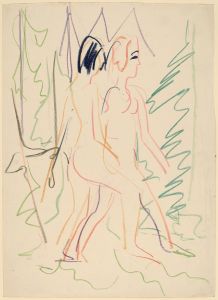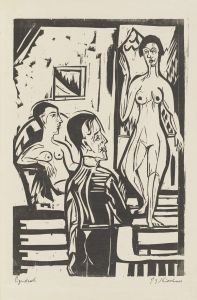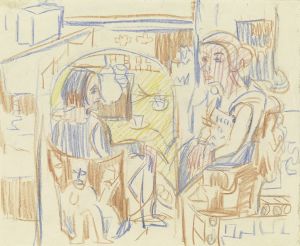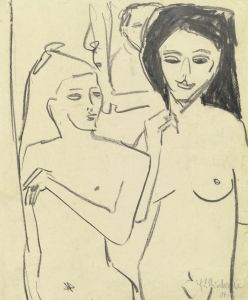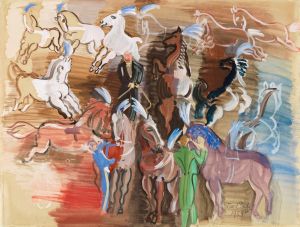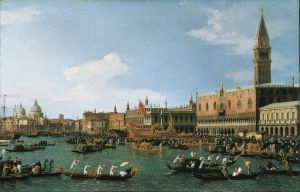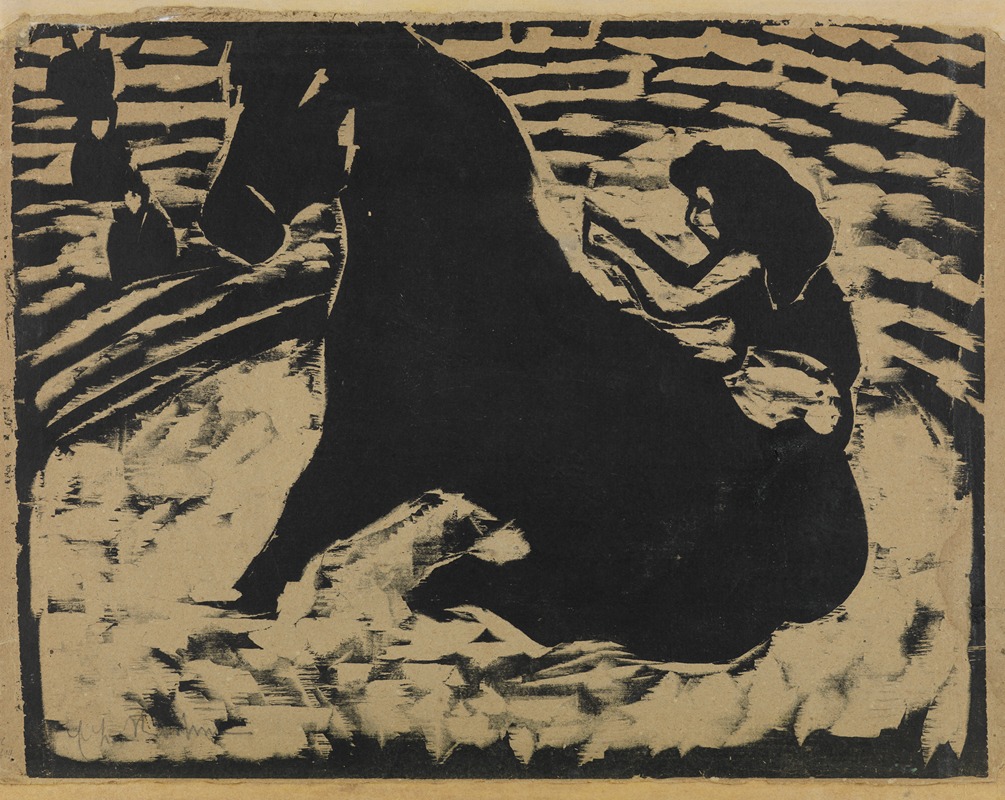
Zirkusreiterin – Artistin auf schwarzem Pony
A hand-painted replica of Ernst Ludwig Kirchner’s masterpiece Zirkusreiterin – Artistin auf schwarzem Pony, meticulously crafted by professional artists to capture the true essence of the original. Each piece is created with museum-quality canvas and rare mineral pigments, carefully painted by experienced artists with delicate brushstrokes and rich, layered colors to perfectly recreate the texture of the original artwork. Unlike machine-printed reproductions, this hand-painted version brings the painting to life, infused with the artist’s emotions and skill in every stroke. Whether for personal collection or home decoration, it instantly elevates the artistic atmosphere of any space.
Ernst Ludwig Kirchner, a prominent German expressionist painter and one of the founding members of the influential art group Die Brücke, created the painting "Zirkusreiterin – Artistin auf schwarzem Pony" (Circus Rider – Artist on Black Pony) in 1912. This work exemplifies Kirchner's dynamic style and his fascination with movement, color, and the human form.
The painting depicts a female circus performer riding a black pony, capturing the vibrant and lively atmosphere of a circus scene. Kirchner's use of bold colors and dynamic brushstrokes conveys a sense of energy and excitement, characteristic of the expressionist movement. The composition is marked by its vivid palette and the fluidity of the lines, which emphasize the motion of the rider and the pony. This reflects Kirchner's interest in capturing the essence of modern life and the human experience through expressive forms and colors.
Kirchner was deeply influenced by the urban environment and the cultural life of Berlin, where he moved in 1911. The city's bustling atmosphere and diverse entertainment scene, including circuses, cabarets, and theaters, provided rich subject matter for his work. "Zirkusreiterin – Artistin auf schwarzem Pony" is a testament to Kirchner's engagement with these themes, showcasing his ability to translate the dynamism of modern entertainment into his art.
The painting is also indicative of Kirchner's broader artistic goals, which involved breaking away from traditional artistic conventions and exploring new ways of representing reality. As part of Die Brücke, Kirchner sought to create art that was raw, emotive, and reflective of contemporary life. The group's work was characterized by a focus on bold colors, simplified forms, and a departure from realistic representation, all of which are evident in this painting.
Kirchner's work during this period was also influenced by non-European art forms, particularly African and Oceanic art, which he admired for their perceived authenticity and emotional directness. This influence can be seen in the stylized forms and the emphasis on the expressive potential of color and line in "Zirkusreiterin – Artistin auf schwarzem Pony."
The painting is part of a larger body of work by Kirchner that explores themes of performance and spectacle, reflecting his fascination with the intersection of art and life. His circus scenes, in particular, highlight the performative aspects of modern life and the ways in which individuals navigate their identities within the public sphere.
"Zirkusreiterin – Artistin auf schwarzem Pony" is housed in the collection of the Kunstmuseum Basel in Switzerland, which holds a significant number of Kirchner's works. The museum's collection provides insight into the artist's development and his contributions to the expressionist movement.
Ernst Ludwig Kirchner's legacy as a pioneering figure in modern art is underscored by works like "Zirkusreiterin – Artistin auf schwarzem Pony," which continue to be celebrated for their innovative approach to form, color, and subject matter. Through his art, Kirchner offered a unique perspective on the vibrancy and complexity of early 20th-century life, leaving an indelible mark on the history of art.





